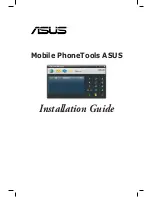
449
<Co
mmon ph
ra
se
s>
ME
NU
3
8
Entering Text
d
Entering text by quoting personal
data or phonebook entries
In the Text entry (edit) screen for an e-mail mes-
sage or “Text memo”, you can use this proce-
dure to enter the name, readings, phone
number, e-mail address, street address, birth-
day or memo stored in the “Phonebook” or in
the “Own number”.
c
Data cannot be quoted from some Text entry
(edit) screen.
1
Text entry (edit) screen (p.440)
X
p
(FUNC)
X
“Quote data”
X
“Phone-
book” or “Own data”
■
When “Phonebook” is selected
X
Select “Search group”, “Search column”
or “Search all”
X
Search the phonebook for
the entry to be quoted
Searching the phonebook (search method
specification)
→
p.116
■
When “Own data” is selected
X
Enter your security code
2
Select the item to be quoted
3
o
(Finish)
<Common phrases>
MENU38
Editing and Storing
Common Phrases
This function allows you to store common
phrases in advance so that they can be
retrieved from the Text entry (edit) screen later.
Common phrases stored at the time of pur-
chase can be edited (changed).
c
Common phrases are stored in 5 folders. Folders
1 and 2 each contain 10 preset fixed common
phrases. You can modify preset common
phrases. Folders 3 to 5 will each hold up to 10
original common phrases. You can also rename
the folders to suit the uses of the common
phrases they contain.
c
Common Phrases
→
p.467
Composing a new common
phrase
1
i
X
X
“Common phrases”
The “Common phrases folder
list” screen appears.
2
Select a folder
The “Common phrase list”
screen appears.
3
Highlight “<Not stored>” and press
o
(Edit)
X
Enter a common phrase
e
Fixed common phrases are displayed (represented)
differently depending on the input mode, as shown
below. Original common phrases and fixed common
phrases that have been modified are displayed as
stored regardless of the input mode.
a
Mode 1 (5-touch) and Mode 3 (T-9 input) :
Displayed as kanji/hiragana in Kanji/hiragana input
mode.
Displayed as single-byte katakana in other input
modes.
a
Mode 2 (2-touch) :
Displayed as kanji/hiragana in double-byte input
mode.
Displayed as single-byte katakana in single-byte
input mode.
(In English mode, the fixed common phrases are
the same regardless of the input mode.)
NOTE
e
When you quote a street address, the zip code “
〒
”
symbol and “-” are not quoted.
090XXXXXXXX
03XXXXXXXX
090XXXXXXXX@docomo.ne.
Quote phonebook
1450071X−XXX−XXHeiwaji
IchiroDocomo
IchiroDocomo
Quoting a phonebook entry
NOTE
e
Common phrases can contain up to 64 double-byte or
128 single-byte characters.
e
You can include pictographs in common phrases for
mail. When an i-mode mail that contains pictographs
is sent to a mobile phone of other company (au/
Vodafone/Tu-Ka), the pictographs are automatically
changed to similar ones supported by the receiver’s
mobile phone. However, pictographs may not be dis-
played correctly depending on the model of or func-
tions supported by a receiver’s mobile phone.
e
Fixed common phrases are retrieved as kanji/
hiragana when the text entry method is “Kanji/
hiragana input mode” in Mode 1 (5-touch) or Mode 3
(T9 input) or “double-byte character input” in Mode 2
(2-touch), and as “single-byte katakana” when
another text entry method is used.
(In English mode, the fixed common phrases are the
same regardless of the input mode.)
Common phrase folder list
Common phrases
Folder 4
Folder 5
Folder 2
Folder 1
Folder 3
Select
FUNC
Function menu
¨
p.450
Common phrase list
Folder 3
<Not stored>
<Not stored>
<Not stored>
<Not stored>
<Not stored>
<Not stored>
<Not stored>
<Not stored>
<Not stored>
<Not stored>
Edit
Select
FUNC
Function menu
¨
p.450
Содержание N902iX
Страница 98: ......
Страница 110: ......
Страница 128: ......
Страница 156: ......
Страница 180: ......
Страница 210: ......
Страница 242: ......
Страница 294: ......
Страница 334: ......
Страница 342: ......
Страница 398: ......
Страница 436: ......
Страница 500: ...498 Appendix External Devices Troubleshooting Specific Absorption Rate SAR of Mobile MEMO ...
Страница 501: ...499 dIndex Quick Manual Index 500 Quick Manual 508 ...
















































